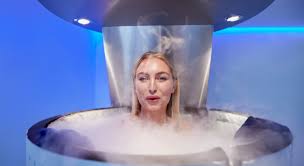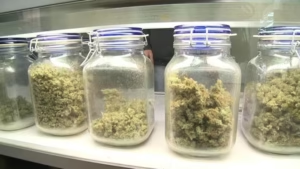What Is a Cold Therapy Room? Benefits, Setup, and Costs Explained
A Cold Therapy Room is more than a wellness trend; it supports recovery, pain relief, and overall health. With benefits

A Cold Therapy Room has become a popular option for people looking to improve recovery, manage pain, and boost overall well-being. This service is used by athletes, fitness enthusiasts, and even those dealing with chronic conditions.
Here’s a breakdown of what it is, how it works, and what to consider before using one.
What Is a Cold Therapy Room?
A Cold Therapy Room is a controlled environment designed to expose the body to very low temperatures for a short duration, usually two to five minutes. The goal is to stimulate natural healing processes, reduce inflammation, and promote faster recovery. Unlike ice baths, these rooms use chilled air rather than water, offering a more comfortable experience with consistent cooling effects.
Benefits of Using a Cold Therapy Room
The benefits of cold therapy make it an attractive option for both athletes and wellness seekers. Here are some of the most common advantages:
- Pain relief: Cold exposure helps reduce nerve activity, which may ease muscle and joint pain.
- Inflammation control: Low temperatures can limit swelling after intense workouts or injuries.
- Faster recovery: Many athletes use it to recover quickly between training sessions.
- Improved circulation: Alternating between cold and warm environments supports blood flow.
- Mood boost: Exposure to cold may trigger endorphin release, improving energy and mood.
Together, these benefits highlight why more people and service providers are considering cold therapy as part of recovery routines.
How to Set Up a Cold Therapy Room
Setting up this type of room requires careful planning and professional equipment. The following elements are essential:
- Cooling system: High-grade refrigeration units are essential to maintain safe, consistent temperatures.
- Insulation and design: Proper insulation ensures efficiency, while safety features like temperature controls are critical.
- Safety protocols: Staff must be trained to guide users, monitor sessions, and handle emergencies.
- Comfort features: Some rooms include music, lighting adjustments, and privacy options to enhance the experience.
By combining these elements, service providers can create a safe, efficient, and client-friendly cold therapy setup.
Costs to Consider
The financial aspect of setting up and running a cold therapy service is significant. Here are the main costs to account for:
- Installation costs: Equipment, insulation, and construction expenses are typically high.
- Maintenance: Regular servicing of cooling systems is necessary to ensure safety and efficiency.
- Operational costs: Power consumption and staffing can add to ongoing expenses.
Factoring in these costs helps businesses decide whether it is more viable to offer in-house services or partner with existing wellness providers.
Why Businesses Invest in Cold Therapy Rooms
Wellness centers, gyms, and sports clinics often add this service to stand out from competitors and meet growing demand. Offering cold therapy sessions can attract new clients, boost retention, and add a premium recovery option. This makes the investment worthwhile for many service-based businesses.
Secondary Considerations
When deciding whether to use or install such facilities, businesses should weigh demand, costs, and safety requirements. Customers also need to ensure they are medically fit to try this service, as extreme cold exposure may not suit everyone. Facilities that prioritize safety and professional guidance tend to deliver better user experiences.
Conclusion
A Cold Therapy Room is more than a wellness trend; it supports recovery, pain relief, and overall health. With benefits like reduced inflammation and improved mood, it appeals to athletes and wellness seekers. Though setup and operational costs can be high, rising demand makes it a valuable addition for health and fitness providers.



